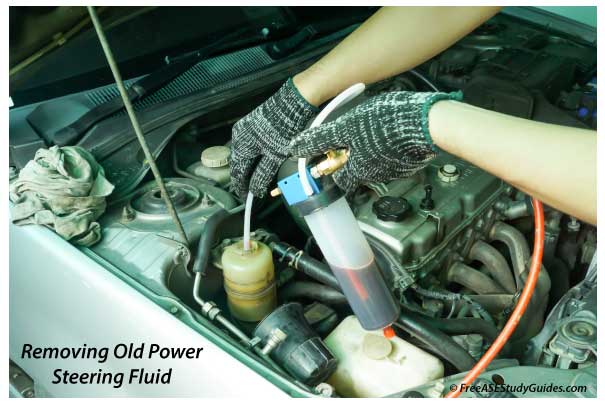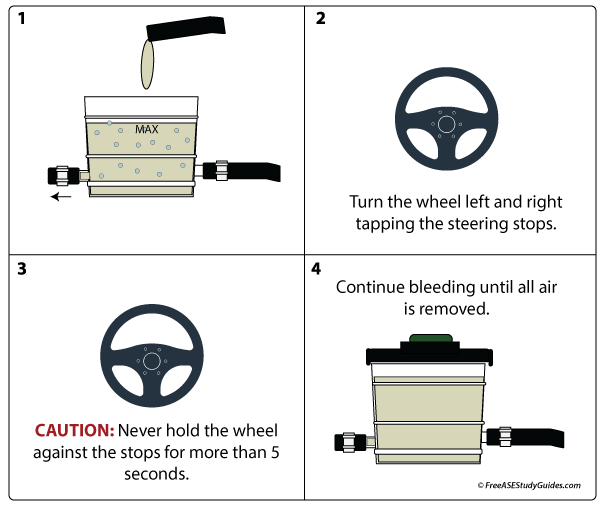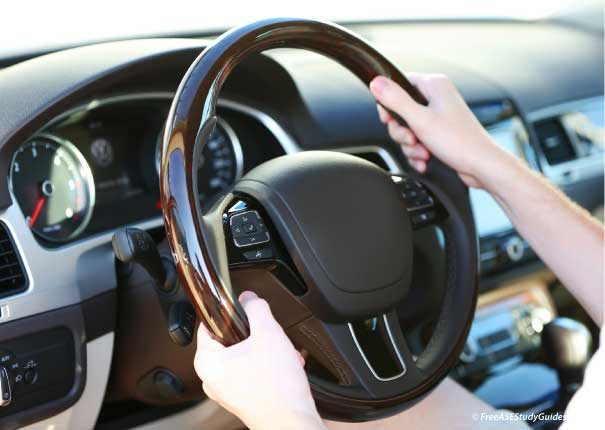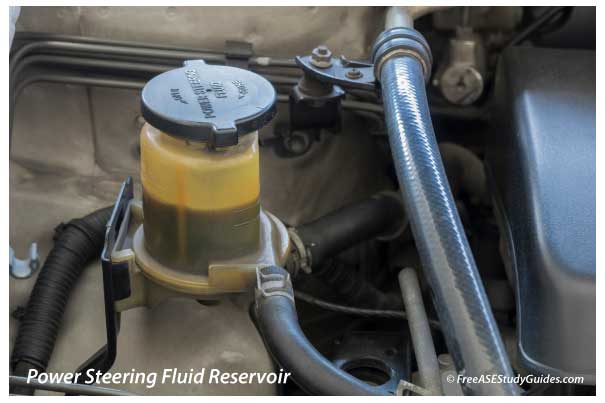Bleeding the Power Steering System

After replacing a part of the power steering system, it must be bled to remove any air that may remain trapped in the system. Make sure all connections are tight, preventing fluid from leaking out and air from entering the system.

Raise the wheels off the ground and fill the reservoir with fresh power steering fluid. Have a helper monitor the level in the reservoir. Allowing the system to run low allows air to enter and can quickly damage the power steering pump.

Start the engine and turn the wheel left and right about 20 times, but hold it against the stops for at most 5 seconds. Holding the wheel against the stops causes a sudden increase in system pressure, possibly damaging internal seals and rupturing hoses.

Monitor the system for a sucking sound, foam, and air bubbles in the fluid. If air bubbles remain, shut down the engine for a few minutes and let the fluid settle. Inspect the system for leaks, remove all the air, and fill the reservoir to its MAX level.